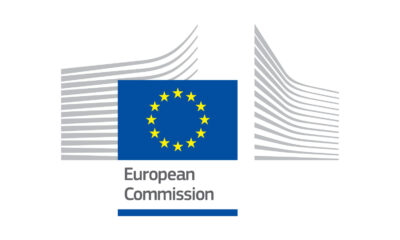Travel
Booking a cruise on your New Year’s to-do list? How to save money from an industry insider
The year’s biggest cruise sale is almost here, but is it really possible to both save money and be eco-conscious?
Wave Season is famous in the cruising industry for being the busiest booking period of the year. 2025 is set to be no different, thanks to the post-pandemic boom in cruising.
From January until the end of March, bookings flood in, with some of them made years in advance of the voyage.
I’ve previously worked for a cruise line and have been a travel writer for 24 years, so I guarantee Wave Season is the best time to save money and score perks like free room upgrades or credit to use onboard.
Thanks to the Friends of the Earth US’s (FOE) Cruise Ship Report Card, you can now easily make more environmentally responsible decisions, too.
Here, I give you my tips and tricks for finding the best bargain while avoiding the most common mistakes.
How to save money on a cruise – and why a bargain might not be all it seems
There’s little point in shunning the fireworks to leap onto booking sites at 00:01 on 1 January. Bargains can be found throughout the three-month sale period, with additional discounted cruises often added right up until the end.
How far in advance should you book a cruise? The industry is unusual in that bookings can open well over two years in advance, a long time before flights are even bookable. Such advance bookings are, however, unlikely to attract large discounts, so during Wave Season, you may want to focus on departures within 12 months.
It’s possible to find heavily discounted last-minute deals, but they usually mean you have to go when there are still plenty of available cabins on a particular sailing rather than having a choice of dates.
I have, however, seen excellent deals (such as an MSC Cruises holiday departing Southampton for just £50 (€60) per person per night in a balcony cabin) up to two months before departure. Further savings can be made if you’re not fussed about cruising during a destination’s low season.
Be warned: cheaper cruises will often get you the bare minimum for your bargain holiday. You’ll pay extra for access to the spa and some restaurants, and for any drinks apart from teas, coffees and juices.
I equate the cheaper end of the cruise market with the Ryanair model of offering incredible up-front prices, then pestering you for those optional extras. Whereas before, you could choose where your cabin is, now, when you pay less, you don’t necessarily get that choice.
Apart from the cons of cruising on a minimal budget, there are also positives. Having been on an astonishingly cheap MSC cruise, I can safely say that you’ll still have a great time. You’ll be going to the same destinations as those who have paid considerably more, mostly eating the same food and enjoying the same on-board entertainment. There won’t be any hidden charges, like taxes and tips, either.
There’s a lot to be said for paying more too. Paying upfront for drinks packages and access to speciality restaurants means you won’t be worrying about your spending once on board. If you think you’ll be wanting spa time then it’s often cheaper to include this in your package before you sail.
My personal preference is to go as cheap as possible. I know that if I want additional drinks, I can purchase them individually without a huge on-board cost. For example, a beer on Royal Caribbean’s ships will set you back about US$8 (€7.62), and there are often daily promotions on certain drinks. Because I’m not interested in having more than two or three paid-for drinks every day I know that drinks packages are not for me.
Is it better to book a cruise directly or via a travel agent?
I’m a keen independent traveller, I like creating my own holidays and saving money along the way. But when it comes to booking a cruise, a travel agent can be of enormous value. I’ve seen cruise lines provide agents with prices you may not find elsewhere, plus agents have the expertise of pulling in various other discounts to get you the very best deal going. Found a better price elsewhere? It’s possible that an agent can beat it, so don’t be afraid to ask.
Airlines like to hide some of their most discounted rates by combining them in package holidays. So if you’re booking a cruise that necessitates flights, having an agent package them together could save you money, especially during the main airline sale season (which overlaps with Wave Season in January).
You can cut your carbon footprint by looking into arriving at your cruise’s departure point by land or sea rather than flying. Long-distance and overnight trains are booming right now, with journey times ever shorter and trains more comfortable than ever. You also only need to arrive at the train station an hour before your train leaves – instead of waiting in an airport for hours. Websites like Omio and Trainline are great for figuring out routes and prices.
Being loyal to a cruise company rewards them – and you
If you’ve been on a cruise before and you still have access to your previous booking details, you can enjoy that cruise line’s loyalty programme. Cruise companies love loyalty – they’re willing to offer generous discounts and perks to repeat bookers.
If you’re feeling overwhelmed by choice, I recommend starting your Wave Season sale search with a cruise line you’ve enjoyed sailing on before. That amazing sale price you found? It can be made even more amazing by adding the loyalty discount on top.
After a slow start, the cruise industry has now caught on to more advanced online booking technology. I still find it worthwhile shopping around different cruise agencies, but, in my experience, the difference in price can be negligible. Where the real differences between these websites lie are in how search results are presented and the filters you can select when searching.
Combining cruise deals with environmental responsibility
Another benefit of the advances in booking cruises online is that you can search for less polluting cruises. I love that online agency Iglu Cruise has researched each line’s sustainability goals, using criteria such as shoreside power and advanced wastewater systems to create an ‘Eco-Friendly’ filter on its search page.
The FOE’s Cruise Ship Report Card ranks lines and ships from A to F based on four key environmental factors: Sewage treatment, air pollution reduction, water quality/scrubber use, and transparency.
It’s rare to see such a complicated issue presented so clearly. All you do is compare cruise lines in the left-hand column with the grade they received in the right-hand column. Look out for the tabs at the top of the table to see the scores for individual ships.
I’m impressed at how this report card cuts through the usual greenwashing. For example, many lines boast about how some of their ships can now run on liquified natural gas (LNG), but it’s not as clean as they claim it is. “Lately many cruise ships have been outfitted with LNG technology,” says Marcie Keever, author of the Cruise Ship Report Card, “but this is a polluting fuel producing harmful amounts of methane.”
It’s thanks to this level of research and detail that the report card is the best tool for any cruise booker wanting to easily make more responsible decisions.
How to be environmentally friendly while onboard a cruise
There are plenty of things you can do once onboard a cruise to contribute to reducing the voyage’s carbon footprint. Firstly, don’t bring more luggage than you need – as that makes the ship heavier.
Act as you would in your own home – don’t waste water (an especially precious resource on a ship), turn off the lights, and unplug devices when you leave your cabin.
Many ships now have advanced recycling centres, so take the time to throw away your rubbish in the correct bin.
It’s always best to reuse towels and bedlinen to reduce ocean pollution. For example, the ship Norwegian Bliss gets through 5,000 kg of laundry every day, with the resultant wastewater pumped into the sea.
When you first see those buffets laden with delicious food or learn that you can, in fact, order as many dishes from the menu as you want, you may be tempted to pile up your table with as many plates as it can carry.
I get it: food is a big part of any cruise. On Royal Caribbean’s largest ships, an incredible 3,200 slices of pizza are served every hour. My advice is to pace yourself, not least because, by doing so, you will help to reduce the vast amounts of food waste generated by cruises.
I’ve never noticed a difference in price between cruises that spend more time in ports than they do at sea. But cruises that involve more sea days will, of course, be burning more fuel.
In addition to choosing cruises with less travel time, it’s also worth seeing if your cruise stops at ports that offer cleaner shoreside power. Cruise Lines International Association has produced this handy map to help your search.
Travel
UK ETA travel permit: British dual nationals flag issues with application system
The UK’s Electronic Travel Authorisation (ETA) system has officially expanded to European travellers.
Starting 2 April 2025, all EU (except Irish nationals), EEA, and Swiss citizens need ETA approval to enter the UK.
The system became mandatory for travellers from the US, Canada and Australia on 8 January 2025, following its rollout last November for nationals of Bahrain, Jordan, Kuwait, Oman, Qatar, Saudi Arabia and the UAE.
To obtain the visa waiver, which costs £10 (€12) from today or £16 (€19) from 9 April, travellers need to complete an online process – but some British citizens with dual nationality are already flagging issues.
How to apply for the UK’s ETA visa waiver
Travellers can either use the official mobile app, which can be downloaded from the UK government website, or apply online here.
To complete the application, you need the passport you’ll be travelling on, an email address and a credit card, debit card, Apple Pay or Google Pay. You will have to answer a set of suitability questions. You don’t need to enter your travel details.
The government advises applying at least three working days before your trip.
You can delete the app when you’ve finished applying. Your ETA will be linked to your passport digitally, and you will not need to show anything else when you enter the UK.
Though it seems pretty simple, the application process has left a handful of British dual nationals confused about whether they need to apply for the visa waiver or not.
ETA application issues for British dual nationals
In theory, British citizens with dual nationality do not need ETA and should be able to travel to the UK on whatever passport they choose.
But confusion has arisen for those who don’t have a British passport because theirs is expired, lost, or they were never issued with one.
If they choose to travel on their EU passport, the process of applying for ETA – and whether it is necessary – remains unclear.
The ETA application form asks travellers to declare any other nationalities, but the drop-down menu does not give the option to select ‘British citizen’.
Should British dual nationals continue with their application without declaring their ‘secondary’ nationality, they would theoretically be forced to give misinformation about their dual nationality.
Euronews Travel posed the question to an ETA advisor from the Home Office on their web chat.
The advisor refused to give guidance about not declaring British nationality on the ETA form. They stated that if you are a dual citizen with British/Irish citizenship, you do not need an ETA.
However, “you prove your permission to travel using your valid British/Irish passport or other passport containing a certificate of entitlement to the right of abode in the UK.”
When asked what to do if the traveller is not in possession of any of these documents, the advisor responded, “You either need to apply for a British passport or a certificate of entitlement”.
Renewing a UK passport from overseas costs £101 (€123), while a certificate of entitlement comes with a £550 (€658) fee. Both application processes take several weeks.
Euronews Travel has reached out to the Home Office for official guidance.
Travel
Iceland’s Blue Lagoon spa and nearby town evacuated due to volcanic eruption
Flames and smoke shot through the air as the volcanic fissure opened near the town of Grindavik.
A volcano began erupting in southwestern Iceland on Tuesday as tourists at the nearby Blue Lagoon and residents of local communities were evacuated.
Flames and smoke shot through the air as a fissure opened near the town of Grindavík, about 50 kilometres southwest of the capital, Reykjavik, where roughly 40 homes have been evacuated, according to national broadcaster RUV.
Residents mostly vacated the community, located on the Reykjanes Peninsula, in 2023 when the volcano came to life after lying dormant for 800 years.
A swarm of small earthquakes began at around 6:30am local time on 1 April, similar to previous eruptions. The eruption just north of the protective barrier near Grindavík then began at 9:45am, according to Iceland’s Met Office (IMO).
Warning sirens started to sound when the orange-red fissure reached the town’s defence walls at around 10am. IMO has said that the fissure is now around 700 metres long, and “it cannot be ruled out that it may continue to open further south.”
Iceland sits above a volcanic hotspot in the North Atlantic and, on average, sees one eruption every four to five years.
Experts have warned that volcanic activity in the Reykjanes peninsula has entered a new era, with the frequency of eruptions having surged. This is the 11th such event to have occurred since 2021, when this new eruption period began.
Iceland’s Blue Lagoon closed until further notice
The Blue Lagoon is one of Iceland’s biggest tourist attractions. Authorities evacuated guests from the geothermal spa, moving them to nearby hotels when it became clear an eruption was imminent.
It will remain closed through 1 April, and the situation will be assessed later on, according to a message posted on the Blue Lagoon’s website. All guests with bookings during this temporary closure will be contacted.
A ‘red alert’ has been issued for the town of Grindavík, and the area around it is closed off. It will remain closed until further notice.
Travellers have been asked to respect the closures and instructions from local authorities and to stay away while conditions are being assessed, according to Safe Travel Iceland.
During previous eruptions, tourists and locals keen to see the majestic event first-hand have been repeatedly warned to stay away from Reykjanes.
Though it is yet to be updated for the most recent eruption, the UK’s FCDO says eruptions and earthquakes are common in Iceland due to the country’s nature geography.
“In the event of an eruption or wider seismic activity follow the latest advice issued by the authorities,” it says. It adds that travellers should regularly check for alerts and advice from the Icelandic Tourism Board, Icelandic Met Office, Safe Travel Iceland and the Almannavarnir Facebook Page.
The effects of the eruption are currently localised and have not caused any problems for the nearby Keflavík airport- Iceland’s main international airport.
Though ash clouds from previous volcanic eruptions in Iceland have had disrupted international air travel, this one is not expected to do so.
Travel
What is the ETA? European travellers need €12 entry permit to visit the UK starting this week
Read our full guide to the UK’s new Electronic Travel Authorisation (ETA): who needs it, how long it’s valid and how to apply.
The UK’s Electronic Travel Authorisation (ETA) system has officially expanded to European travellers.
Starting 2 April 2025, all European visitors will need ETA approval – or, for some non-EU nationals, a visa – to enter the UK.
The system became mandatory for travellers from the US, Canada and Australia on 8 January 2025, following its rollout last November for nationals of Bahrain, Jordan, Kuwait, Oman, Qatar, Saudi Arabia and the UAE.
Read on for details on cost, validity and how to get it.
What is the ETA?
The ETA replaces the single-use Electronic Visa Waiver (EVW) scheme, offering a lower cost option with multi-entry validity.
The UK government notes that it is not a visa and does not permit entry into the UK. Rather, it authorises a person to travel to the UK.
The ETA is now required for all eligible nationalities. You can find the full list of countries here.
How do I apply for an ETA to enter the UK?
Most visitors will be able to apply using a mobile app and can expect a decision emailed within three days.
Everyone travelling needs to apply, including babies and children, but you can apply for other people.
The UK government says its app is the quickest and easiest way to apply for an ETA. You can download the ETA app from the UK government website.
If you cannot download the app, you can also apply online here.
To complete the application, make sure you have on hand the passport you’ll be travelling on, an email address and a credit card, debit card, Apple Pay or Google Pay. You will have to answer a set of suitability questions. You don’t need to enter your travel details.
You can delete the app when you’ve finished applying. Your ETA will be linked to your passport digitally, and you will not need to show anything else when you enter the UK.
When to apply for your ETA
The government says: “You must apply for an ETA before you travel to the UK. You can travel to the UK while waiting for a decision.”
Considering most applicants will get a decision within three days, it can be assumed you should apply at least three ahead of travelling to the UK, though you can do it much further in advance.
How much does the UK ETA cost?
Like the Electronic System for Travel Authorisation (ESTA) in the US, a fee is attached to the application process.
The ETA costs £10 (approximately €12 at the time of writing), rising to £16 (€19) on 9 April 2025.
How long is the ETA valid?
An ETA lasts for two years. You do not need to apply again during this time.
You can travel to the UK as many times as you want during the period of validity, but you cannot stay for longer than six months on one trip. Check the UK government website for more details on what you can and cannot do on an ETA.
Note that you will need to apply for a new ETA if you get a new passport, as your ETA is linked to it.
Will I need a visa to enter the UK?
As mentioned above, the ETA isn’t a visa, but it does grant permission to enter the country.
All visitors who don’t currently require a visa will need to get an ETA before they travel. This includes those who do not currently need to submit any form of application to visit the UK. US, Canadian, Australian and European citizens need an ETA even for short stays or transiting through the UK, for example.
Travellers from countries that don’t have visa-free entry agreements with the UK will still have to apply for the correct visa and an ETA.
If you don’t apply before your trip, the government says you could be fined, though no further details have been given about this.
You still need to apply if you are transiting through the UK – even if you aren’t going through border control.
The ETA allows you to come to the UK for six months for tourism, visits to family and friends, business or short term study.
You can also get an ETA instead of a visa if you are coming to the UK for up to three months on the Creative Worker visa concession or coming to the UK for a permitted paid engagement. Outside of these conditions, you can’t use an ETA to do paid or unpaid work for a UK company or as a self-employed person.
Who does not need an ETA?
British and Irish citizens, people who already have a visa or permission to live, work or study in the UK, those travelling with a British overseas territories citizen passport and people who live in Ireland and are travelling from Ireland, Guernsey, Jersey or the Isle of Man don’t need to apply for an ETA.
Why is the UK introducing the ETA scheme?
The ETA is part of the UK’s plan to digitise its borders at UK airports by the end of 2025.
The scheme is intended to reduce queues at the border, “helping to speed up legitimate journeys to the UK”.
Facial recognition technology could be used to make these “contactless corridors” possible, British newspaper The Times reports. It would require international travellers to submit biographic and biometric details, like photos of their faces through the new Electronic Travel Authorisation (ETA) scheme before they fly.
-

 Politics7 days ago
Politics7 days agoGetting EU ready to prevent and respond to crises
-

 EU & the World7 days ago
EU & the World7 days agoCould Litia Garr Be the Next Bachelorette? Update After Grant Ellis Breakup
-
Travel7 days ago
‘Fundamental for tourists’ trust’: Why Italy is cracking down on fake hotel and restaurant reviews
-

 Sports7 days ago
Sports7 days agoCivitanova closes series with Milan and joins Perugia in Scudetto semifinals
-

 EU & the World6 days ago
EU & the World6 days agoInnam Dustgir’s Approach to Public Relations
-

 Sports7 days ago
Sports7 days agoMiami, Arthur fils overturns Alexander Zverev and gives Jannik Sinner a gift
-

 Sports7 days ago
Sports7 days agoVirtus Bologna blown away by Red Star: Dusko Ivanovic raises alarm
-

 Sports7 days ago
Sports7 days agoPlayoff Scudetto: Itas Trentino wins game 4 with Cisterna and flies to semifinals









